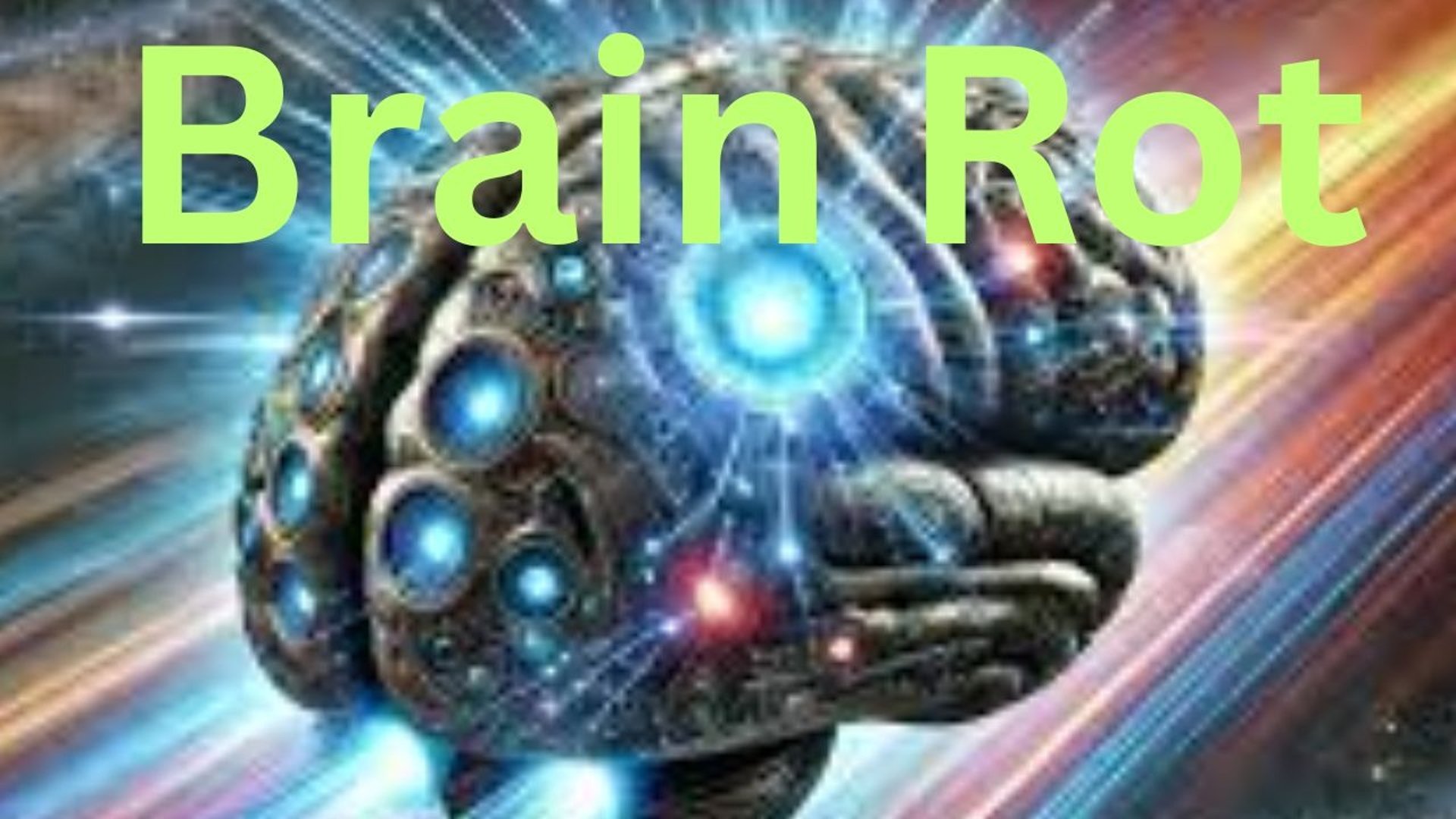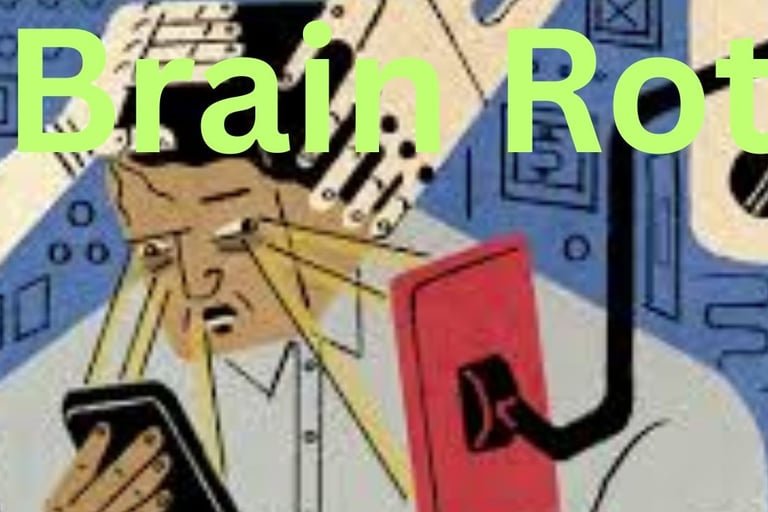
Health is a crown on the heads of the healthy that only the sick can see.

🧠 Brain Rot and Voluntary Fasting: What's the Connection?
✅Voluntary fasting may help protect the brain from neurological deterioration and decay associated with toxins and inflammation. Brain rot isn't an official medical diagnosis, but it indicates severe cognitive decline. Could fasting be an effective preventative measure? Learn about its benefits in enhancing memory and brain health in this science-backed article.
NERVOUS SYSTEM
Dr Hassan Al Warraqi
7/24/20255 min read


🧠 Brain Rot and Voluntary Fasting: What's the Connection?
✅Voluntary fasting may help protect the brain from neurological deterioration and decay associated with toxins and inflammation. Brain rot isn't an official medical diagnosis, but it indicates severe cognitive decline. Could fasting be an effective preventative measure? Learn about its benefits in enhancing memory and brain health in this science-backed article.
🧠 Meta Keywords:
Brain rot, mental decline, voluntary fasting, intermittent fasting, neurodegeneration, neuroinflammation, autophagy, Alzheimer's, brain toxins, brain protection
Definition
Brain rot is a popular term referring to the supposed deterioration of an individual's mental or intellectual state, resulting from excessive consumption of superficial, non-thought-provoking digital content, such as short videos, memes, and worthless entertainment content on platforms like TikTok and YouTube Shorts.
Historical origin: The first recorded use of the term dates back to 1854 in Henry David Thoreau's book "Walden," in which he criticized the decline of intellectual standards in society and compared it to the "potato rot" of 1810 Europe.
Recent spread: The term became popular as an internet meme in 2020 on Discord, and its usage increased by 230% between 2023 and 2024. Chosen as the "Word of the Year 2024" by the Oxford Dictionary
Mental and Psychological Effects
Deterioration of cognitive functions:
Poor concentration and memory, and difficulty processing complex ideas, as a result of exposure to fast-paced content that requires little mental effort
Decrease in "white matter" in the brain (responsible for communication between neurons), as MRI studies have shown in children who spend >7 hours a day on screens
Psychological Effects:
Increased social isolation and depression, due to the replacement of human interaction with digital content
Sleep disturbances and anxiety, especially in adolescents, as a result of constant exposure to excessive content and blue light
Most Affected Groups
Children and adolescents:
They represent the most vulnerable group due to the malleability and flexibility of their brains. An American study (2023) showed that internet use among them increased from 40% to 70%, with an average of 9 hours per day.
Cases such as Mira (9 years old), who went from being a talented poet and reader to suffering from distraction after becoming addicted to short videos.
Adults:
Examples such as James (42 years old), who lost his ability to concentrate at work or keep appointments.
Manifestations of brain rot in digital culture.
Language and terminology:
The prevalence of Gen Z and Alpha terms such as "skippedie" (from skippedie tolit), "res" (attractiveness), and "dilulu" (obsession).
The use of these terms outside of a digital context, as in Australian Senator Fatima Byman's 2024 parliamentary speech, which was described as "brain rot."
Types of causative content:
"Instant gratification": clips of less than 60 seconds that weaken the ability to endure prolonged mental effort.
"Sludge Content": Split-screen videos distracting
Global efforts to combat the phenomenon
Official warnings:
Pope Francis (2025) called for reducing social media use to avoid "putrefazione cerebrale" (brain rot).
Countries like Australia are considering banning social media platforms for those under 14.
Preventive strategies:
For families: Set time limits on device use, and combine devices during family meals or before bed.
For individuals: Promote "deep activities" such as reading and live conversations, and monitor daily video consumption.
The role of awareness-raising:
Raising awareness among younger generations of the effects of the phenomenon, as seen in discussions on platforms like TikTok about the importance of digital balance.
Conclusion: Between medical diagnosis and cultural phenomenon
"Brain rot" remains a descriptive term rather than an official medical diagnosis, but it reflects a contemporary challenge rooted in Thoreau's analyses 170 years ago.
Its danger lies in its "silent erosion" of mental abilities, especially as digital platforms transform into environments designed for addiction.
Effective confrontation requires concerted family, educational, and political efforts, with a focus on redefining "quality" in digital content.
💎 Conclusion: Fasting as a Neuroprotective Tool
Voluntary fasting is not merely a religious or dietary practice; it is a biological strategy for enhancing brain resilience against the challenges of the digital age.
Through mechanisms such as ketosis, enhanced BDNF, and autophagy, fasting becomes a protective shield against "brain decay," provided it is implemented in a thoughtful manner that balances hydration, nutrition, and reduced exposure to shallow digital content.
However, further human studies remain needed to further understand its complex interactions.
1. Simplification: Converting previously complex information into manageable points.
2. Thematic Categorization: Dividing questions into interconnected groups (causes, symptoms, solutions).
3️⃣ New addition: Including aspects I haven't covered in-depth before, such as the role of schools and video games.
4️⃣ Encourage implementation: Including immediately actionable advice, such as "one hour without screens per day."
- Use clear language that avoids academic complexity.
- Provide everyday examples close to the user's reality (such as the effect of "Reels").
- Explain the difference between normal use and addiction.
- Reference practical situations, such as dealing with stubborn teenagers.
The user seems interested in digital mental health, perhaps as a parent, teacher, or young person looking for solutions.
I will add encouraging notes at the end because the topic may be anxiety-inducing ("change is possible in small steps").
FAQs About "Brain Rot" and voluntary fasting
🧠 The Basics of the Phenomenon
What is brain rot?
"Brain rot" is a popular term describing the deterioration of mental functions like concentration and memory, primarily due to excessive consumption of superficial digital content (e.g., TikTok videos, YouTube Shorts) that doesn't require deep thought.
Is "brain rot" a recognized medical diagnosis?
No, it's a descriptive term, not an official medical diagnosis. However, studies confirm its real effects on the brain, such as reduced white matter and attention deficits.
⚠️ Causes and Symptoms
What are the most common causes of brain rot?
Key causes include addiction to short-form content platforms (often exceeding 7 hours per day), "sludge" content like multi-screen videos, and the pursuit of instant gratification without mental effort.
How do I know if I or my child has it?
Symptoms may include difficulty concentrating on long tasks (like studying), rapid forgetting of information, deterioration in social communication skills, and using unfamiliar internet terms ("skibidi," "rizz") in everyday speech.
🛡️ Prevention and Treatment
How can I protect my children from brain rot?
Limit screen time (aim for two hours per day for children), replace shallow content with mentally stimulating activities (reading, puzzles), and implement device bans during family meals and two hours before bedtime.
What is the role of voluntary fasting in treatment?
Fasting can help by enhancing ketone production (fuel for neurons), activating autophagy to clear brain toxins, and increasing BDNF levels, which improve memory and mood.
Are there other beneficial activities?
Absolutely! Consider meditation for concentration, craft activities (drawing, woodworking), and regular exercise to improve blood flow to the brain.
🌍 The Global Reality of the Phenomenon
Are countries taking action against the phenomenon?
Yes. Australia is considering banning social media for under-14s, the EU is imposing restrictions on TikTok's addictive algorithms, and even Pope Francis (2025) has warned against "brain decay."
Do video games cause brain decay?
They can, especially if they are fast-paced (like PUBG), rely on constant stimulation without strategic thinking, or are played for more than 3 hours daily without balancing activities.
💡 Practical Tips
How do I start a "digital detox" for my mind?
Start by deleting your most time-consuming apps weekly, utilizing your phone's "Screen Time" feature, and dedicating at least one hour per day to "deep activities" like reading a physical book.
Is it possible to recover from brain rot?
Yes, gradual recovery is possible. Try reducing digital content by 20% per week, training your brain with long-term tasks (e.g., 30 minutes of puzzles), and seeking a psychiatrist if symptoms are accompanied by depression or anxiety. Remember, change is possible in small steps!
📌 Awareness Summary
"Brain rot is the slow collapse of our cognitive abilities due to unconscious digitalization. Countering it begins with:
Awareness: Understanding the effects of the content you consume.
Willpower: Setting clear digital boundaries.
Alternatives: Engaging in deep activities that rebuild the mind.
Author Bio:
Dr. Hassan Al-Waraqi
Founder of H-K-E-M.com, Dr. Al-Waraqi is a physician and researcher in natural medicine and fasting therapy.
He combines modern scientific knowledge with traditional wisdom to prevent chronic diseases through fasting, detoxification, and lifestyle improvements, with a special focus on brain and nervous system health.


